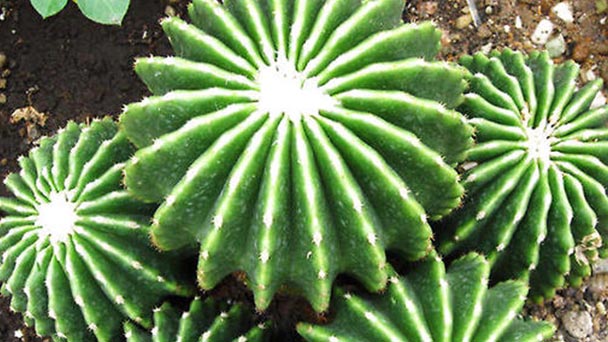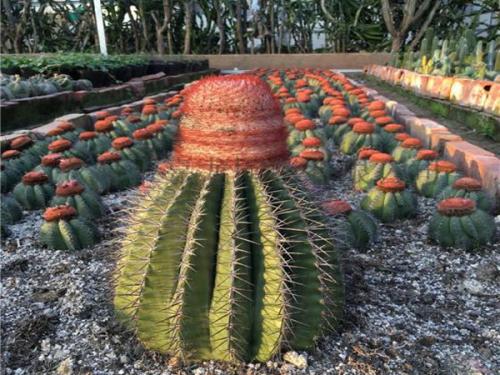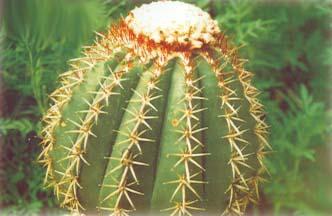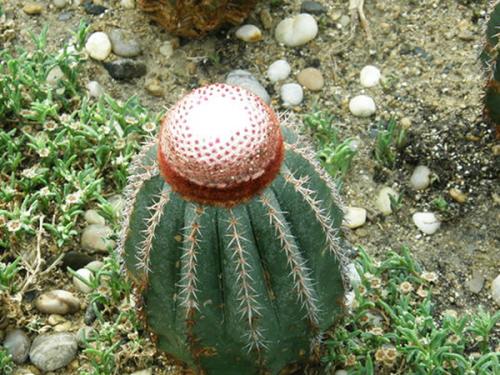Turks cap cactus profile
Written by Maggie
Feb 09 2021

Turk's cap cactus, scientific name Melocactus intortus, is a plant with a stem up to 30 cm thick. The flower base on the tip of Turk's cap cactus is particularly developed. Turk's cap cactus takes up to 7-8 years to blossom and bear fruit. The flowers that come out are particularly beautiful and can't be left for long. Turk's cap cactus (Melocactus intortus) likes a warm, dry and sunny environment. Turk's cap cactus is cold resistant, drought resistant, and high temperature resistant. Soil with fertile, loose and well - drained sandy loam soil best. The temperature in winter is not lower than 5°C. Turk's cap cactus is native to South America, generally grows in high heat, dry, little rain in desert areas.
Turk's cap cactus picture

Distribution and growth habits of turk's cap cactus
Distribution of Turk's Cap Cactus: West Indies, Central America.
Turk's cap cactus (Melocactus intortus) growth habits :Turk's cap cactus is a kind of warm-weather plant, dry, like sunshine, relatively hardy, like to grow on fertile, loose land, winter is not suitable for the environment below 5 degrees. South America, home to Turk's cap cactus, is a hot, dry desert with few inches of land.
Turk's cap cactus method of propagation
Turk's cap cactus (Melocactus intortus) is commonly propagated by seeding and grafting.
Turk's cap cactus (Melocactus intortus) is a self-fertilized plant, seeds are readily available.Indoor pot seeding was more common in spring, and germinated 2 weeks after sowing, with high germination rate. Seedlings grow into spheres with strong resistance.
Grafting, 4-5 - year - old Turk's cap cactus (Melocactus intortus), using trap-off, promote its germination bulb, and then use the amount of day chi as rootstock, using flat grafting method propagation, grafting bulb growth and forming fast, but short life and poor resistance.

Turk's cap cactus growing methods
Turk's cap cactus (Melocactus intortus) has a shallow root system, so it is appropriate to use a shallow pot for potting. Change the pot every spring, add a little dry sheep dung with a mixture of fertile leaf rot soil and coarse sand, and fertilize once every half a month during the growing period. Summer can be more watering, midsummer increases watering, improves air humidity, and is beneficial to Turk's cap cactus (Melocactus intortus) ball growth. Reduce watering in winter, keep sunshine and pot soil dry. The soil is rich, loose and well drained sandy loam soil. The temperature cannot go below 5 degrees in winter. Sometimes Turk's cap cactus (Melocactus intortus) stem rot, gray mold, available 70% methyl tobujin wettable powder 1000 times the liquid spray. Insects of Turk's cap cactus have red spider and scale insect harm, with 40% oxidized dimethoate emulsion 1500 times liquid spray kill.

Latest Updated
- Benefits of Bugleweed - 7 Science-backed Health Benefits
- Bugleweed Dangers & Side Effects - Is It Poisonous?
- How to Plant Evergreen Trees - What You Should Know
- When to Plant Evergreens - Grow Guide for Evergreen Trees
- 12 Wonderful Evergreen Shrubs for Your Garden
- 12 Popular Evergreen Plants with Pictures for Beginners
- When And How To Prune A Lilac Bush Like a Pro
- How to Grow & Care for Lilac Vine (Hardenbergia Violacea)
- Japanese Lilac Tree (Syringa Reticulata) Care & Propagation Guide
- Shumard Oak Pros and Cons - What to Know
Popular Articles
- Winter maintenance of Antirrhinum Majus
- How to Grow Terminalia Mantaly Tree
- How to Grow and Care for Crossostephium Chinense
- How to grow Antirrhinum Majus in spring
- Peristeria Elata (Dove Orchid) Profile: Info & Care Guide
- Underwatered Snake Plant (Sansevieria Trifasciata) - Signs And How To Fix
- How to Care for Brazilian Jasmine Plant (Mandevilla Sanderi)
- How to Grow & Care for Graptopetalum Purple Delight in Summer
- Rosa Chinensis (China Rose): Plant Growing & Care Tips
- How to Care for Baby Sun Rose (Aptenia Cordifolia)